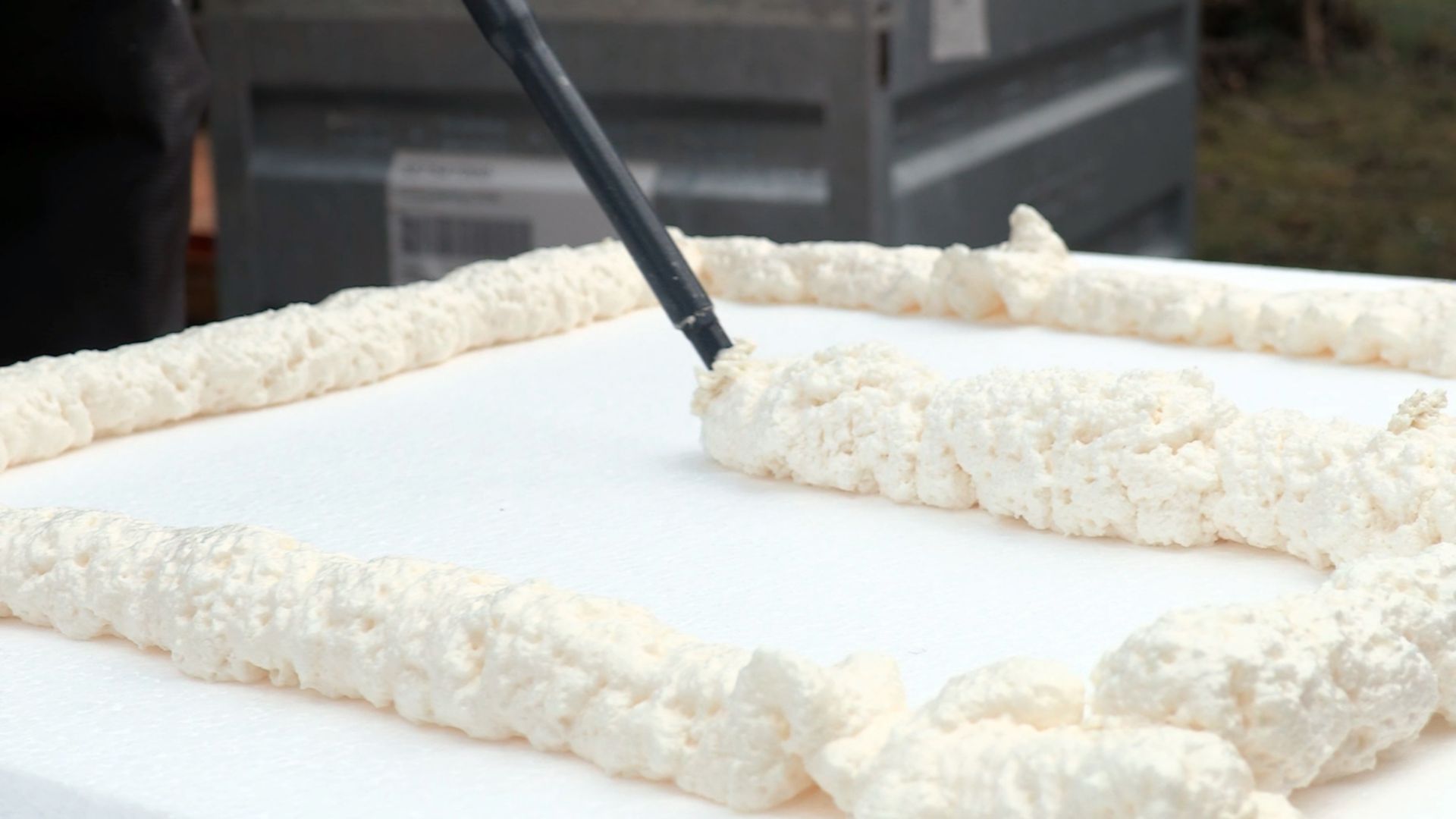Construction foams are an exceptionally versatile group of products used in many areas of daily work. Below you can learn more about their properties and also about the preparation and application process.
Preparation
PU foam canisters must be shaken sufficiently before use. We recommend at least 20 times to ensure that the viscous prepolymer and the blowing agent in the canister are well mixed. This creates a homogeneous compound and the product develops its optimum application properties. If you have a longer break between applications, shaking should be repeated.
Curing of one component PU foams occurs through a reaction with moisture from the environment (air) and the substrate. The applicator should ensure that sufficient moisture is present for the PU foam to cure properly. Only when the foam cures properly, it is able to provide very good insulation values. For this reason, it is in general advisable to pre-dampen the substrate.
However, there are also a few types of foams which must not be pre-dampened:
- 2-component foams must not be pre-dampened
- Foam adhesives are less sensitive in regard to pre-dampening and do generally not need it
- Protective clothing: As the foam is very sticky, gloves should be worn during processing and safety goggles should be worn to protect the eyes.
- Good ventilation should also be ensured during the entire work process.
- Foam canisters must be held with the valve pointing downwards during application. Only in this way can the canister be emptied properly.
Application
This can be due to the low temperature of the canister. In this case, the product has a strongly increased viscosity and cannot be applied as it should, and it only flows out slowly. The result will be accordingly disappointing.
In general, a temperature of the canister of +20 °C is considered optimal for PU foam. It is advisable to warm up under-tempered canisters. Under any circumstances should the canister be exposed to higher temperatures (e.g. hot water, sources of radiation), as this might lead to an increased in pressure of the propellant, which can cause the canister to burst.
Another reason may be that the canister has expired. After the shelf life the viscosity also increases. In this case the canister must be disposed of.
Nozzle applied foam can be applied as sold, with the supplied nozzle attached to the canister. You do not need to obtain a gun for this. If you only need to apply a few canisters, typically for DIY, this is usually the best option.
Gun applied foams are rather for professional users, as the gun needs to be purchased. However, it also has a few advantages. With the foam gun, the foam quantity can be more precisely dosed, and the reusability is also better. For longer breaks, leave the canister unscrewed and then simply continue to proceed. The gun foams are usually used by craftsmen, window installers etc., as they process PU foam in large quantities.
PU foam adheres to all common construction materials. However, the following should be kept in mind:
- The surfaces must be solid, clean, and free of dust and grease.
- PU foam does not adhere well to materials such as silicone, oils and greases, polyethylene, or Teflon®.
In case of pressure sensitive applications (e.g. window or door frame installation) a product with a low curing pressure should be selected.
You can usually proceed with cutting excess foam after a rather short waiting time. Check the cutting time of the product on the canister or on the PDS. This gives you an indication of how long it takes.
Nevertheless, the foam may not be fully cured after this time. The foam is generally fully cured after 24 hours.
Properties
One of the great advantages of PU foam is its very short curing time. After only a short time, the material is cured and can be cut. PU foam also impresses with its very good thermal insulation properties. It can be easily painted or plastered over. Cured foam does not rot and is very resistant to external influences in general.
The density for most PU foams is between 20–30 kg/m³. Special foams can have a higher or also a lower density.
Yes, because the thermal conductivity is about 0.04 W/mK. This corresponds approximately to the figure for an XPS or EPS insulation board.
Cured PU foam is resistant to temperatures of between –40 °C and +80 °C. This means it can withstand such temperatures for a long period of time. The foam can even be exposed to temperatures of up to +100 °C for a short period without suffering any damage.
1-component foams cure with the moisture from the air and the substrate.
2-component foams do not require additional moisture for curing. Curing is achieved by a chemical reaction of two substances which are mixed in the canister before use or during application. Such foams usually achieve higher strength and cure much faster.
As a result of the polymerization that starts soon after the canister is filled, the viscosity of the prepolymer increases steadily as time goes by. Consequently, the yield will decrease slightly on an ongoing basis. However, if the canister has been stored correctly and is still within its shelf life, the result will differ only slightly from a freshly filled canister.

